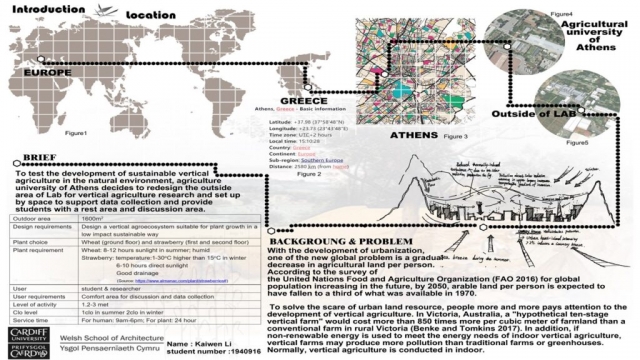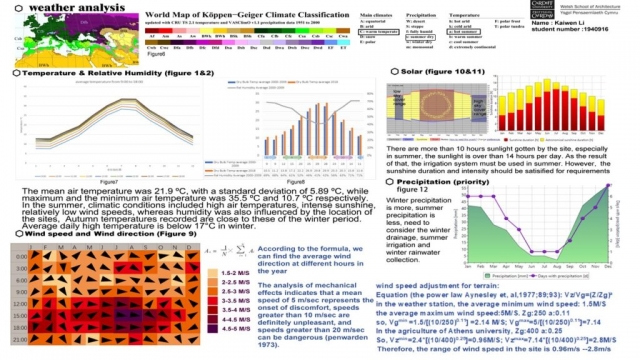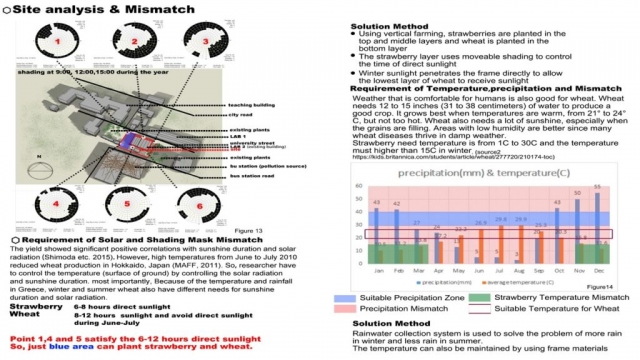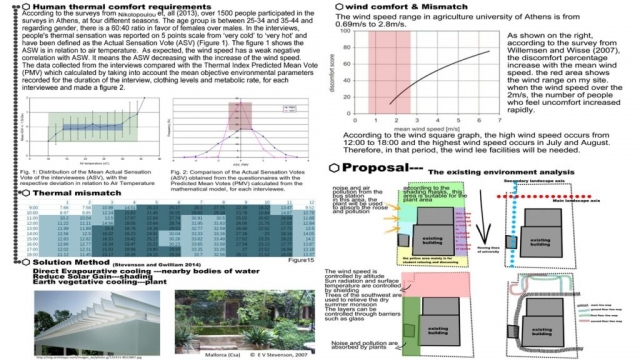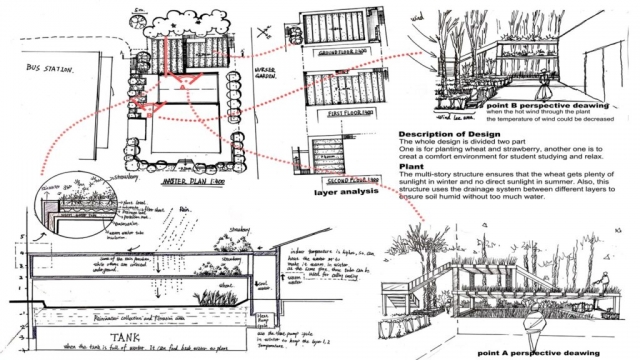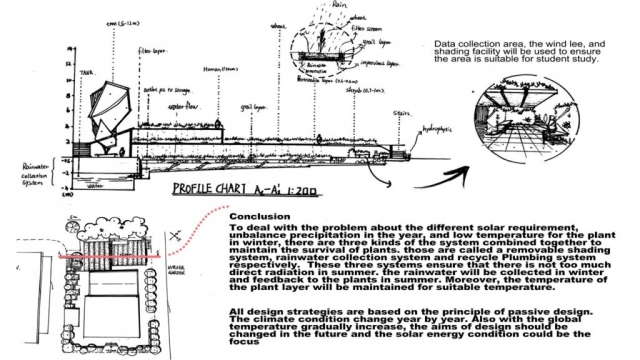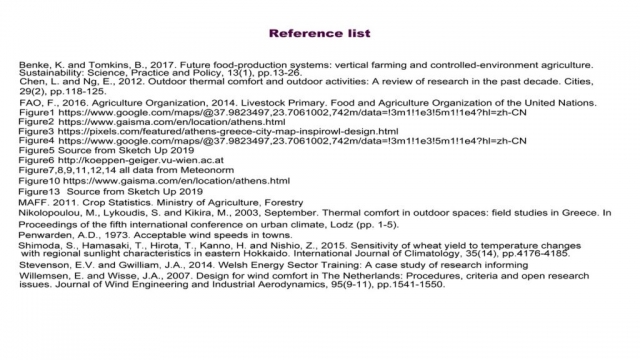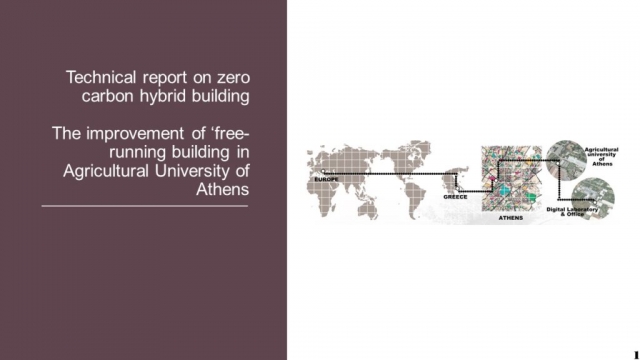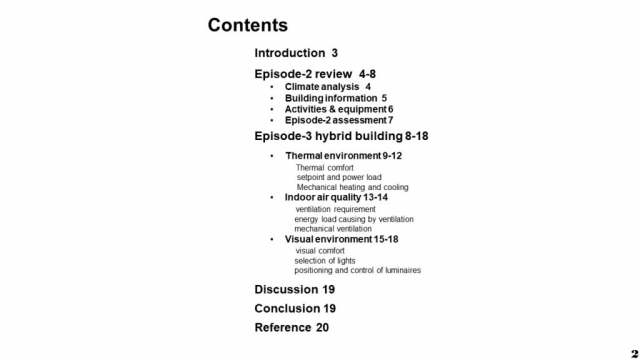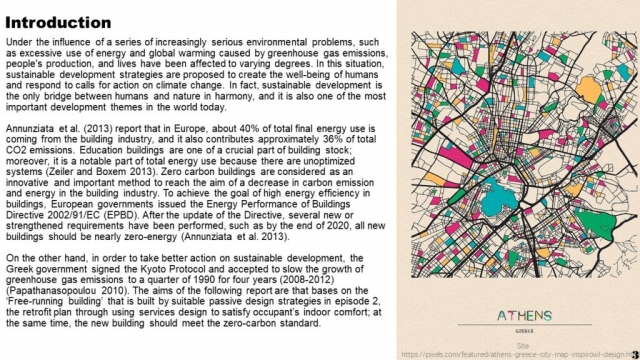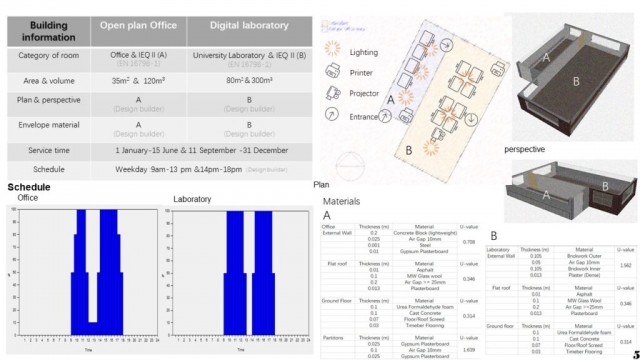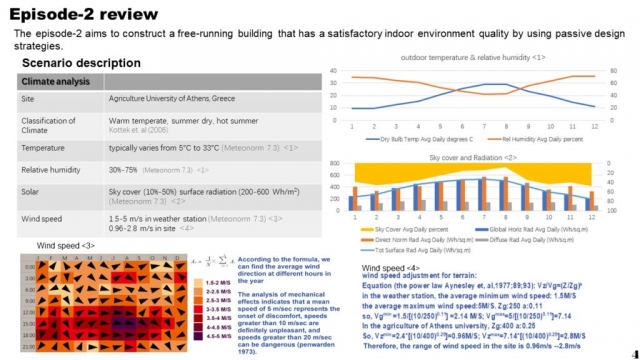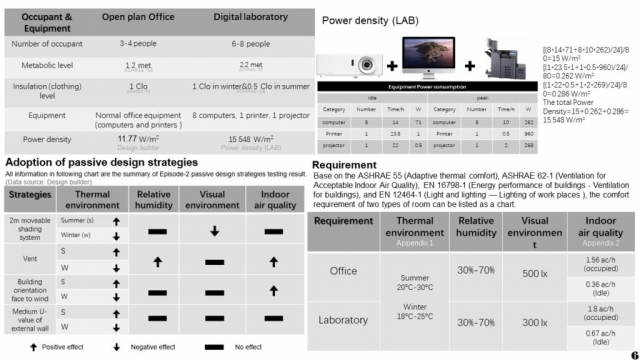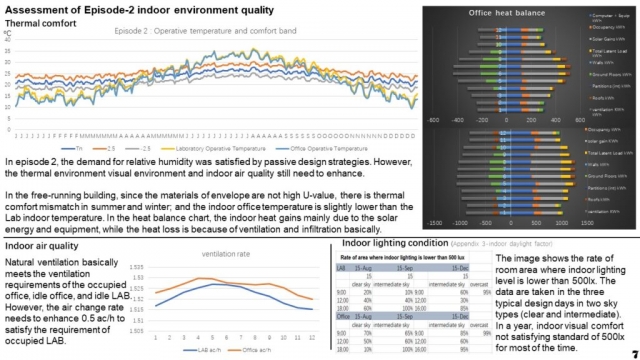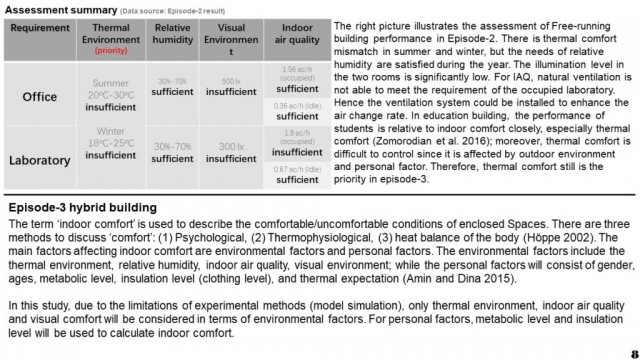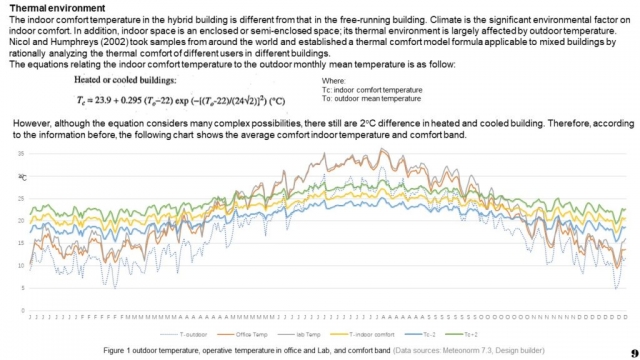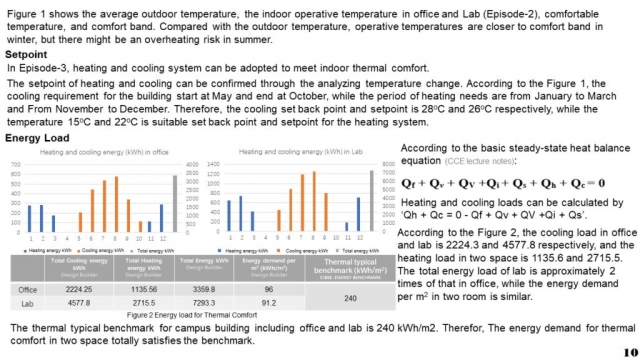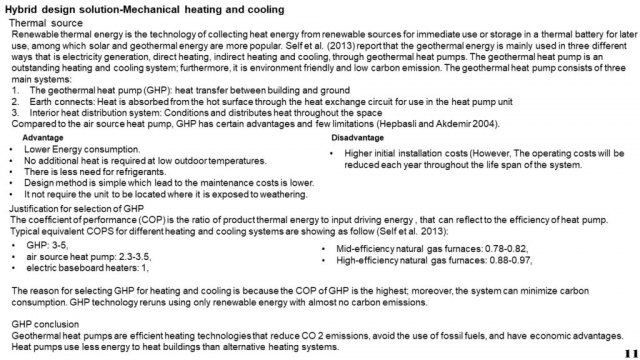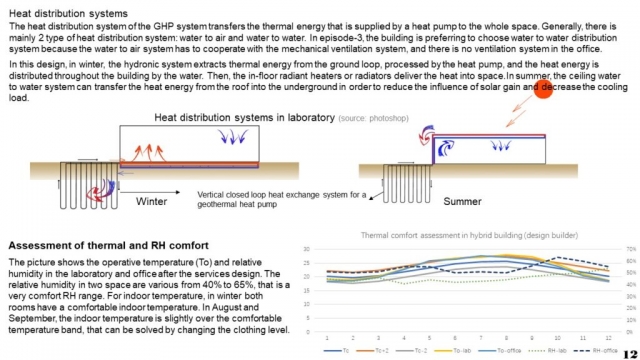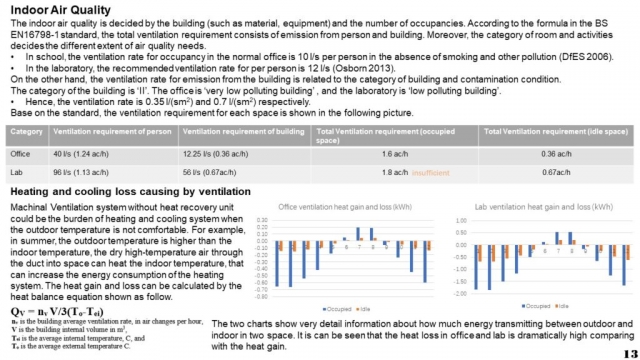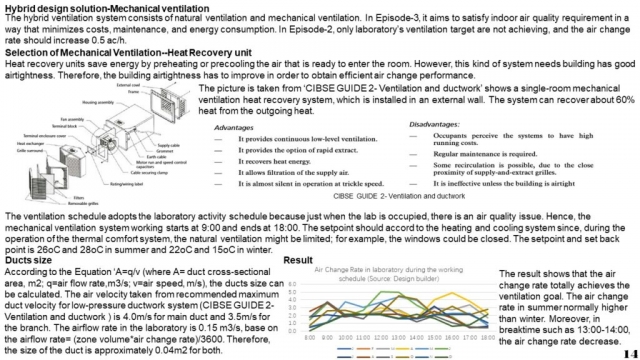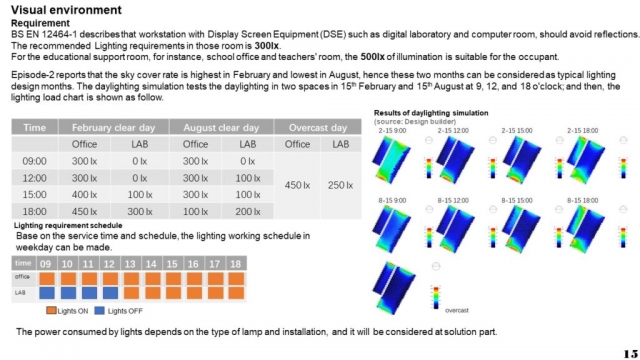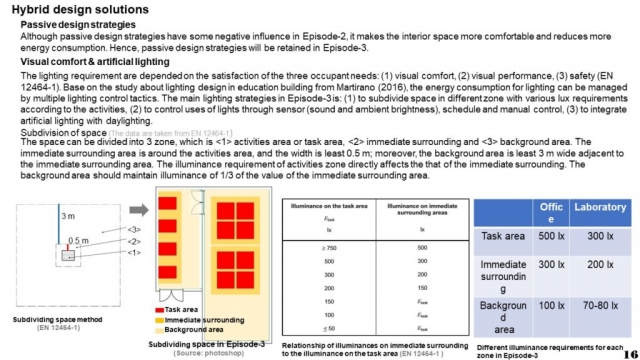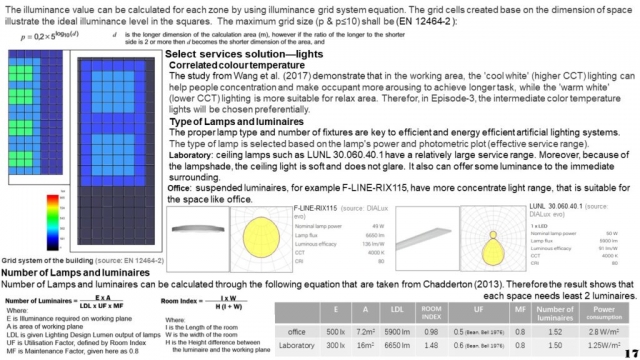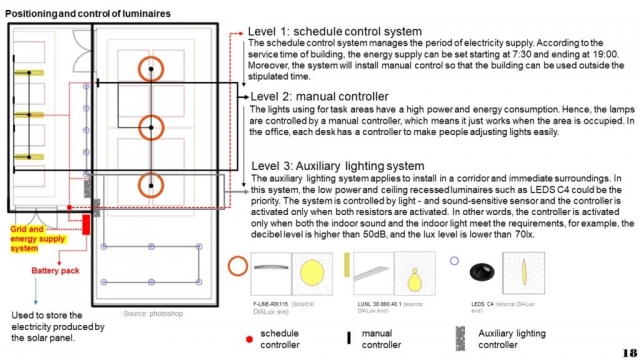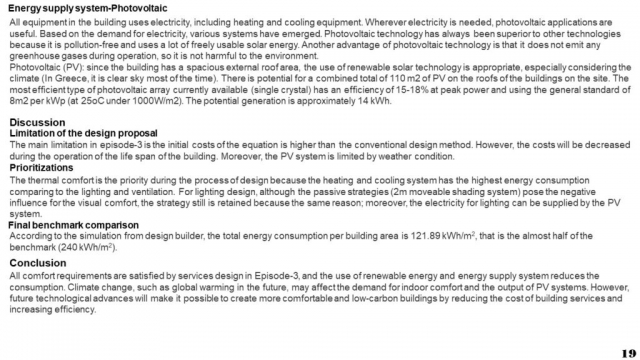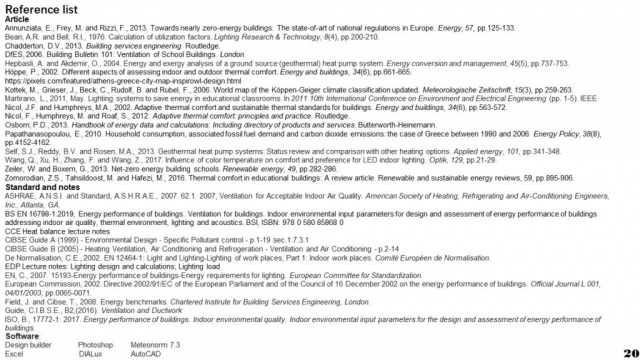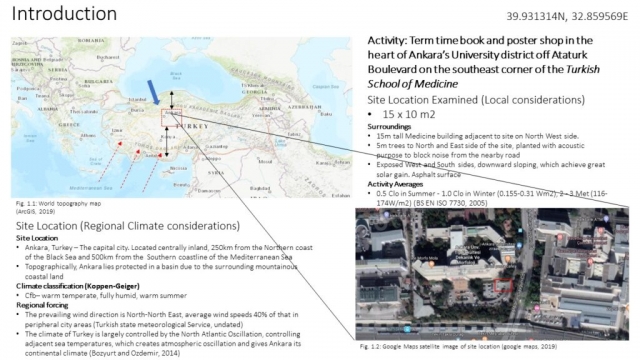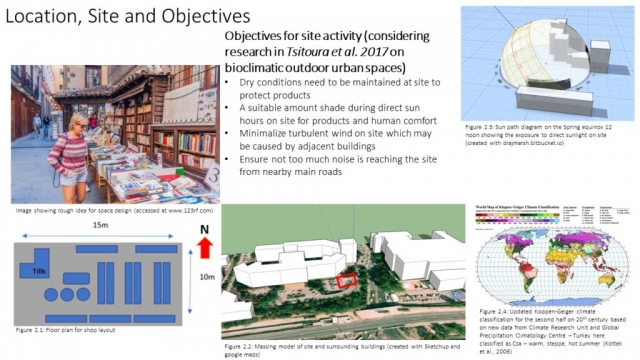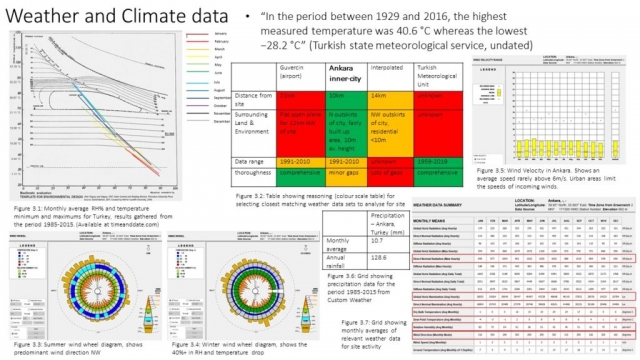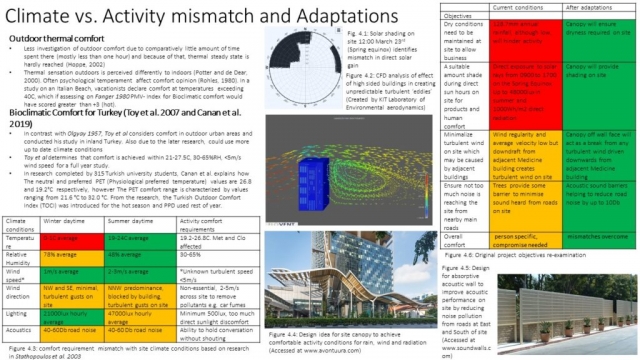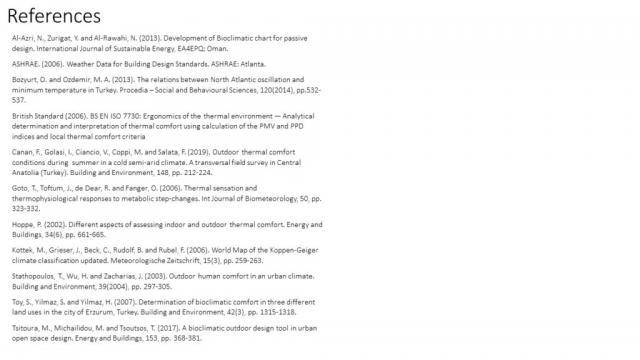This module is the opportunity to apply learning to a realistic environmental design challenge. The project is carried out over three episodes, which guides students in a logical progression through the process:
1) Site
2) Free-running building
3) Hybrid building
Kaiwen Li – Athens (Greece) Site
Kaiwen Li – Athens (Greece) Free running and hybrid serviced building
“EDP is a very important course throughout the school year. It trains us to apply what we have learned about the built environment to practice. The study of EDP is challenging for me because of the large amount of simulation of the built environment, but through learning I have mastered the use of a lot of software, such as ‘Design builder’. In the course, we designed free-running building and hybrid building for outdoor environment, respectively. During the design process, I learned a lot of knowledge, such as different ‘standards’ and ‘materials‘. These have laid a good foundation for me to become a built environment designer in the future.”
Kaiwen Li
Adam Tucker – Ankara (Turkey) Site
“Developing strategy from the preliminary stages of site evaluation through to a mechanical systems building really tied in all considerations required for building use and design, while climate assessment was imperative to design solutions.”
Adam Tucker
Erika Rees – Abuja (Nigeria) Site
EDP_Episode-1_WSA-exhibit_EReesErika Rees – Abuja (Nigeria) Free running building
EDP_Eps2_WSA-Exhibit_ERees“In Environmental Practice we were each assigned a climate type we had no previous knowledge of. I learnt how to interrogate the climatic data in order to best direct my design process. I also learnt about the different models of thermal comfort and their appropriate use. The simulation software, Designbuilder, was used extensively in this module to quantitatively test our design proposals. Ultimately, as intended, Environmental Design Practice, allows puts into practice all the theoretical knowledge acquired in the other modules.”
Erika Rees

